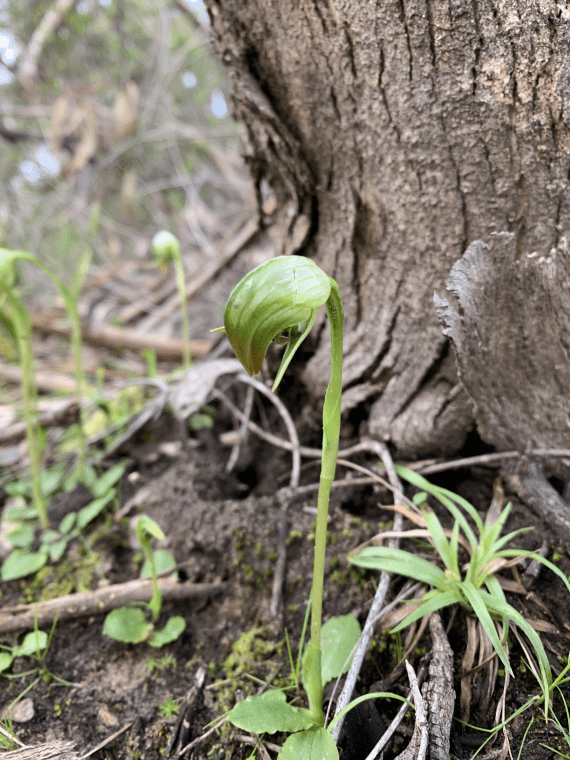 Did you know Grampians National Park, part of the Gariwerd bio-cultural landscape, has more than 1000 species of vibrant wildflowers, 20 of which are only found in the local area?
Did you know Grampians National Park, part of the Gariwerd bio-cultural landscape, has more than 1000 species of vibrant wildflowers, 20 of which are only found in the local area?
The wide variety of rock and soil in the Grampians National Park supports an incredible range of native plants and creates a unique floral wonderland for visitors.
Grampians National Park Ranger Kristina Wadge says across the whole year, visitors can see some of Victoria’s stunning native flowers on the Grampians Peaks Trail. “Gariwerd is an amazing place to view orchids and wildflowers” says Ranger Kristina. “Across each section of the trail, you can spot many beautiful and different flowers. There is nothing more exciting than sighting some of the rare species which can only be found in Gariwerd.”
Kristina has shared some of her favourite species found along the Grampians Peaks Trial. See some of her top picks below:
North section

Grampians Boronia. Credit: Kristina Wadge
Grampians Boronia (Boronia latipinna)
This stunning species is only found within the Grampians – meaning it is endemic to the region.
Hikers can find the bright pink flower in bloom between August and December on the Briggs Bluff section of the trail, north of the Gar hike-in camp.

Small Mosquito Orchid. Credit: Kristina Wadge
Small Mosquito Orchid (Acianthus exsertus)
This orchid flowers from March to July and is commonly distinguished from others thanks to its large, dark coloured flowers. It can be found on the Briggs Bluff section of the trail.

Purple Coral-pea. Credit: Kristina Wadge
Purple Coral-pea (Hardenbergia violacea)
Located north of the Chatauqua Peak section, Purple Coral-Pea flowers from July to November. This long climbing flower provides an important food source for caterpillars.

Banded Greenhood. Credit: Kristina Wadge
Banded Greenhood (Pterostylis sanguinea)
North of the Gariwerd landscape, this orchid can grow up to 40cm high and flower with dark reddish-brown petals. In bloom from April to October, it is located near the northern end of the Grampians Peaks Trail around Mount Stapylton.
Central section

Common Heath. Credit: Kristina Wadge
Common Heath (Epacris impressa)
The Floral Emblem of Victoria, the Common Heath flowers from late autumn to late spring. Their stunning bright pink bell-shaped petals stand out as you walk along native shrubbery throughout the Mount Rosea track.

Gorse Bitter-pea. Credit: Kristina Wadge
Gorse Bitter-pea (Daviesia ulicifolia ssp. ruscifolia)
Found on the Pinnacle track, this shrub can grow up to 2 metres tall and blooms between July and December. With small orange and yellow flowers, the flower attracts butterflies and, helps insects thrive in the Gariwerd landscape.

Native fuchisa. Credit: Kristina Wadge
Native fuchisa (Correa reflexa)
Common throughout most of the National Park, this tubular flower lights up the surrounding trail with its bright pink petals with green tips. The plant attracts native bees and nectar eating birds and flowers between May and November.
South section

Early Nancy. Credit: Kristina Wadge
Early Nancy (Wurmbea dioica)
Early Nancy is one of the first to flower from winter to early spring. Visitors can find it near Yarram Gap camp in the southern section of trail. Beautifully honey scented, its unique white petal with a purple band brightens the surrounding bush.

Nodding Greenhood. Credit: Kristina Wadge
Nodding Greenhood (Pterostylis nutans)
This common orchard can be found in many places along the trail. It often produces large flowering colonies between May and December.
Feeling inspired? Learn more about the Grampians Peaks Trail and Grampians (Gariwerd) National Park.
Keen to take your own photos of wildflowers? Learn how with our top tips for taking wildflower photos.




















